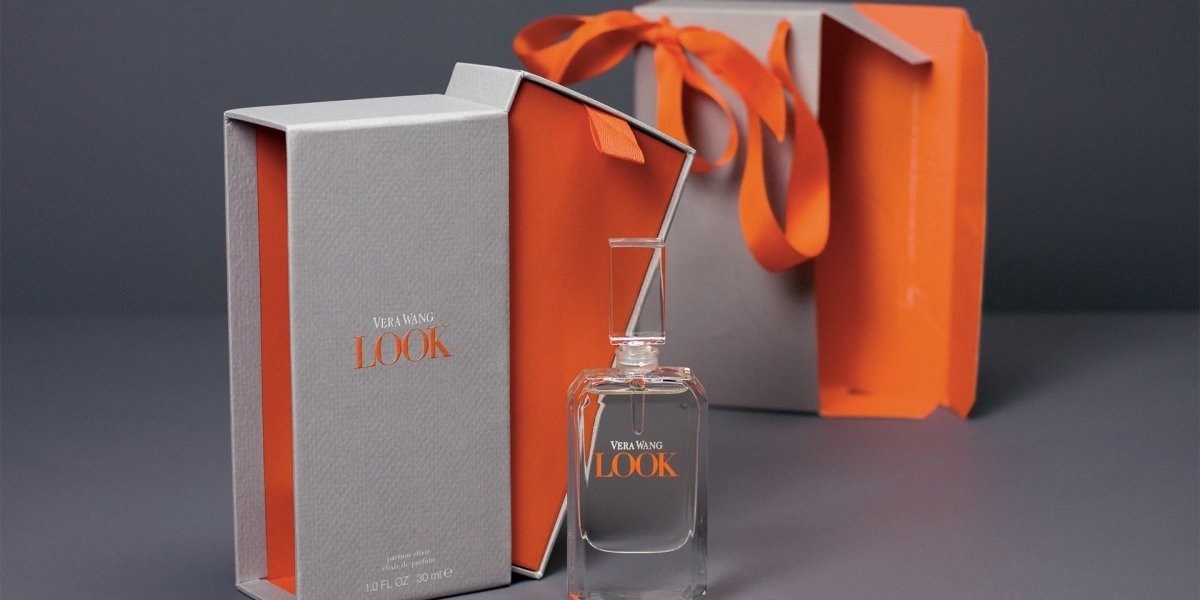As consumers become more eco-conscious, industries are rethinking how their products impact the environment. The fragrance sector is no exception. One major shift is toward sustainable and biodegradable packaging options. This move not only reduces waste but also shows a company’s commitment to the planet.
Bamboo as a Renewable Packaging Material
Bamboo is one of the fastest-growing plants in the world. It can grow without pesticides and requires little water, making it highly sustainable. As a material for packaging, bamboo is strong yet lightweight. It also adds a natural and elegant touch to the overall presentation of a product.
For perfume containers, bamboo can be used to make bottle caps, outer casings, or boxes. Its texture and natural look appeal to environmentally conscious customers. Unlike plastic, which takes hundreds of years to decompose, bamboo breaks down in a much shorter time without harming the soil.
Additionally, bamboo grows back quickly after being harvested. This ensures a continuous supply without damaging forests. When used correctly, it becomes a smart alternative to harmful plastics and metals that are common in packaging.
Brands using bamboo show they care about the environment. This can improve their image and attract customers who want green options. Bamboo is also very adaptable. It can be combined with other biodegradable materials to create unique packaging styles.
The versatility of bamboo allows creative designs while maintaining sustainability. With proper treatment, it can be made resistant to moisture and damage. These properties make it ideal for products that need to stay fresh and protected.
In short, bamboo offers a reliable and beautiful solution for those looking to reduce their carbon footprint. It meets both functional and aesthetic needs while staying eco-friendly.
Cornstarch-Based Bioplastics
Cornstarch is a natural polymer that can be turned into biodegradable plastic. This type of material looks and feels like traditional plastic but breaks down much faster. It is made from renewable resources, making it a greener choice for packaging.
One of the best features of cornstarch-based bioplastics is that they are compostable. When disposed of properly, they return to the earth without leaving harmful residues. This makes them ideal for replacing harmful petroleum-based plastics.
This material can be molded into different shapes and sizes. It works well for protective containers, outer boxes, and sealing films. It is lightweight, which also helps reduce shipping emissions. That makes it a win for both companies and the environment.
The production of cornstarch bioplastics requires less energy compared to regular plastic. This reduces overall pollution during the manufacturing process. Using this material is a responsible choice for businesses that want to make a positive environmental impact.
However, it is essential to ensure proper disposal methods. These bioplastics break down best in industrial composting facilities. Still, they are far less damaging than their non-degradable counterparts, even if they end up in landfills.
Some fragrance companies are already using this material for packaging. They are leading by example and showing that eco-friendly solutions can be both stylish and practical. The smooth finish and clean design of cornstarch plastics make them appealing to consumers.
Overall, cornstarch-based materials are an affordable and effective step toward greener packaging. They help brands meet sustainability goals while satisfying customer demand for more responsible choices.
Glass with Recycled Components
Glass is a timeless packaging material. It is reusable, recyclable, and does not degrade in quality when recycled. Using recycled glass in new packaging reduces the need for raw materials and lowers energy use in production.
When glass is combined with natural cork or wooden caps, the result is a completely biodegradable and recyclable unit. This makes glass a powerful material in reducing environmental impact. It keeps products safe from air and moisture while maintaining an elegant appearance.
Some companies are now adding recycled glass to their production process. This helps reduce landfill waste and carbon emissions. Since glass is non-toxic, it doesn't release harmful chemicals into the environment.
Design-wise, glass offers many possibilities. It can be tinted, shaped, or etched to create beautiful and distinctive packaging. It also feels premium, which adds value to the fragrance inside. The weight and feel of glass convey quality and care.
However, glass is heavier than other materials, which can increase transportation costs. Still, many consumers are willing to accept this trade-off for the environmental benefits. They value the clean, simple lines and reusability of glass.
Choosing glass also signals that a brand is serious about sustainability. It shows a commitment to both the product and the planet. Recycled glass, when sourced and processed properly, is one of the most eco-friendly options available today.
In summary, glass with recycled content is a smart option for sustainable packaging. It blends tradition with innovation and meets the growing demand for biodegradable solutions.
Mushroom Packaging as a Natural Insulator
Mushroom packaging is made from mycelium, the root system of fungi. When combined with agricultural waste, it forms a firm and flexible material. This kind of packaging is 100% biodegradable and compostable.
Mushroom-based packaging is known for its excellent insulating properties. This makes it perfect for delicate products like fragrances that need temperature and impact protection. It is grown, not manufactured, so it has a very low carbon footprint.
Within a few weeks, mushroom packaging can break down naturally in soil. It does not need special facilities for disposal. This makes it highly convenient for both companies and consumers.
It can be molded into custom shapes to fit different bottles and boxes. This means it offers flexibility in design while staying eco-friendly. The natural color and texture also give a handcrafted look, which many customers appreciate.
This material is strong enough to protect fragile items but soft enough to avoid scratches. It is water-resistant to some degree, making it suitable for external packaging. Several startups are now offering mushroom packaging as an alternative to foam and plastic.
Brands that switch to mushroom packaging often receive praise from environmental groups and green-minded buyers. It is still a new technology, but it is growing in popularity due to its environmental advantages.
In conclusion, mushroom packaging is a fresh and innovative choice. It provides excellent protection while staying completely biodegradable. It's a perfect match for companies looking to reduce their environmental impact.
Palm Leaves and Areca Leaf Packaging
Areca palm leaves, often used in disposable plates, are now being shaped into eco-friendly containers. These leaves fall naturally from trees and are collected without cutting down plants. This makes them a renewable and ethical material.
The leaves are cleaned, pressed, and shaped using heat. No chemicals are needed during the process. This keeps the material fully organic and safe for nature. These containers are strong, lightweight, and water-resistant.
In the fragrance industry, they can be used to craft outer covers, holders, or gift boxes. The earthy look of palm leaf packaging creates a strong visual identity. It blends well with natural and organic product lines.
Since no trees are cut down, it preserves biodiversity. Farmers also benefit as they gain income from collecting and selling the fallen leaves. This helps support local communities while promoting sustainability.
This material is biodegradable within 60 days under composting conditions. It leaves no trace behind and enriches the soil instead. The lifecycle of this packaging is short, but its impact is positive and long-lasting.
Designers appreciate this material for its moldability. It can be shaped into boxes, sleeves, or even detailed covers. Its rustic and organic appearance also appeals to environmentally aware consumers.
In short, using palm or areca leaves is both eco-smart and socially responsible. It helps brands stand out while reducing their footprint.
Kraft Paper and Cardboard Options
Kraft paper and cardboard are among the most recognized biodegradable materials. They are made from wood pulp, usually from responsibly managed forests. These materials are simple, low-cost, and fully compostable.
For fragrance products, they serve as wrapping, boxes, and display packaging. Their strength and durability keep products safe during handling and transport. They can also be printed using soy-based or natural inks, keeping the entire packaging eco-friendly.
Kraft paper has a clean, minimal look that appeals to modern consumers. It suggests a no-waste, simple lifestyle. Cardboard, on the other hand, can be layered and folded into custom shapes for premium presentation.
Recycled paper is widely available and easy to reuse or dispose of responsibly. It breaks down quickly and returns nutrients to the earth. This makes it ideal for companies that want to lower their environmental impact.
When paired with natural adhesives and seals, kraft and cardboard become a fully biodegradable system. They can also be laminated with cornstarch coatings to improve resistance without losing compostability.
More brands are turning to these materials because they are effective and flexible. They also help create a cleaner brand image that customers appreciate.
In conclusion, kraft paper and cardboard are trusted, time-tested choices. They meet the demand for sustainable, biodegradable packaging with simplicity and efficiency.
Seaweed-Based Films and Wraps
Seaweed is gaining attention as a sustainable packaging material. It grows fast, absorbs CO2, and doesn’t need land or fresh water to grow. This makes it one of the most eco-friendly materials available today.
Seaweed-based films can replace plastic wraps and coatings. They are fully biodegradable, often within weeks. They also dissolve safely in water, posing no harm to marine life. This is especially important given the rising problem of ocean pollution.
These films are made from seaweed extracts like agar or carrageenan. They are safe, odorless, and non-toxic. In the fragrance industry, they can be used to wrap products or as inner linings for boxes.
Seaweed films can also carry active properties such as antibacterial resistance. This helps protect the product during storage and shipping. They are clear, flexible, and can be made to feel like plastic, yet leave no waste behind.
Brands that use seaweed packaging are seen as innovative and forward-thinking. The natural look and clean feel of the material appeal to consumers who want better choices.
Though still in early stages, seaweed packaging holds strong potential. It meets the rising demand for low-impact, biodegradable alternatives. Its benefits go beyond appearance, offering a real solution to plastic waste.
Sugarcane Pulp and Bagasse
Sugarcane pulp, also called bagasse, is the fibrous material left after juice extraction. Instead of throwing it away, it can be used to create sturdy and compostable packaging. It is renewable, non-toxic, and naturally degrades without polluting the environment.
Bagasse packaging has a rough yet natural texture. It offers good strength and water resistance. These qualities make it suitable for packaging delicate items like glass bottles or decorative containers.
This material is already being used in food and beverage industries. Its application in the fragrance world is growing due to its eco-friendly profile. It can be molded into trays, box inserts, and protective sleeves.
Using sugarcane waste helps reduce reliance on trees. It also reduces landfill buildup by using agricultural waste efficiently. This material breaks down in home compost bins within a few months.
Incorporating bagasse into packaging solutions adds value to a brand’s sustainability journey. It aligns with customer expectations and regulatory pressures to cut down plastic use.
To sum up, sugarcane pulp is a strong and biodegradable material. It supports eco-friendly goals while offering practical use and appealing design.
Each of these solutions brings unique strengths to the table. When used creatively, they help businesses reduce waste and promote a greener future. Incorporating just one of these materials into perfume packaging can make a real difference.
Conclusion
As the demand for eco-conscious products continues to rise, the need for sustainable and biodegradable packaging solutions becomes more urgent. The fragrance industry, known for its elegance and attention to detail, is now embracing this shift toward greener alternatives. Materials like bamboo, cornstarch-based bioplastics, recycled glass, mushroom packaging, palm leaves, kraft paper, seaweed films, and sugarcane pulp each offer a unique set of benefits. They not only protect the product but also protect the planet.
Choosing biodegradable materials reduces environmental harm and supports long-term sustainability goals. It also appeals to consumers who want their purchases to reflect their values. Even small changes in packaging choices can lead to big results when it comes to waste reduction and resource conservation. Companies that take these steps show leadership and responsibility.
Visit our Website: https://ibexpackaging.com/perfume-boxes/






